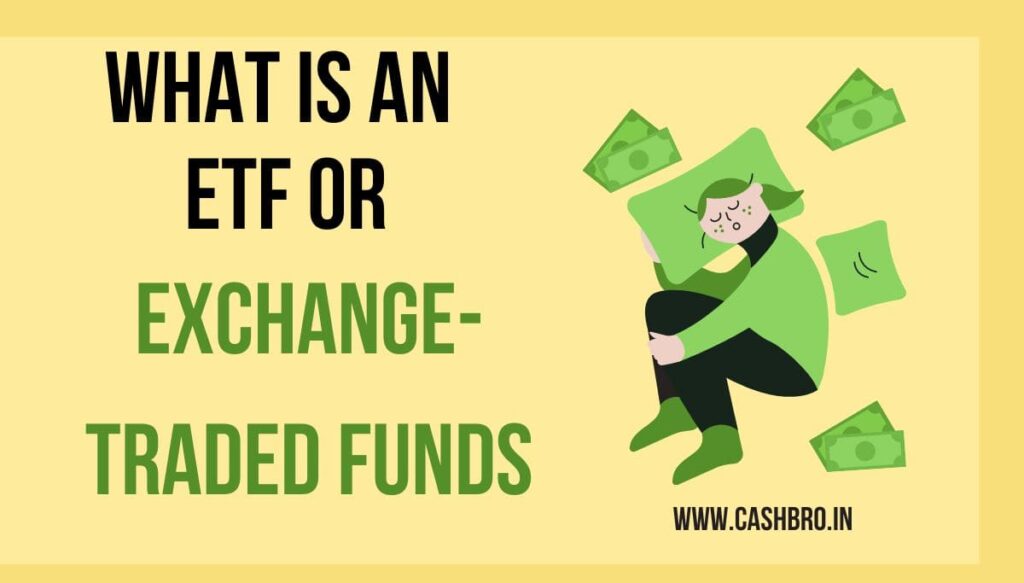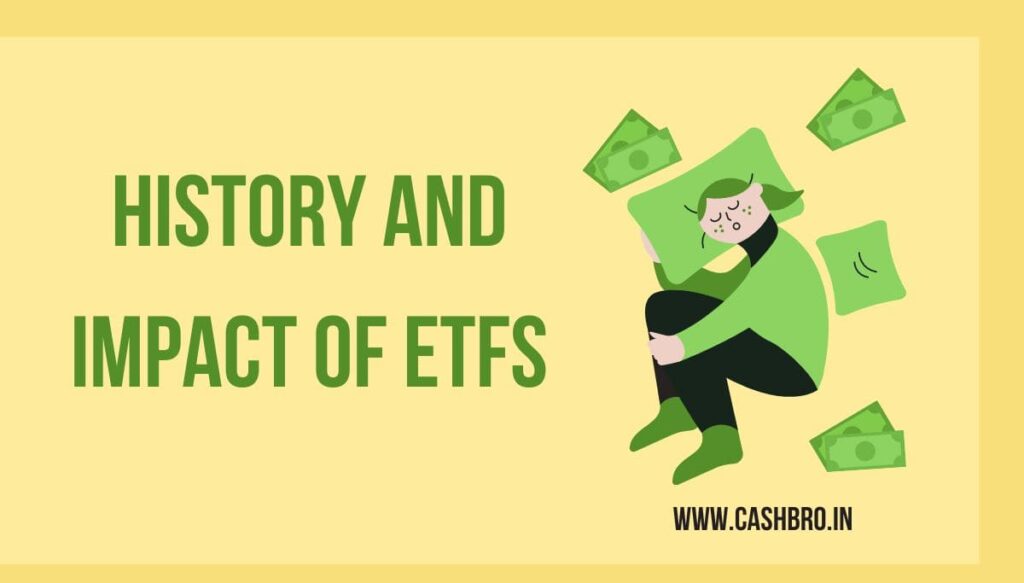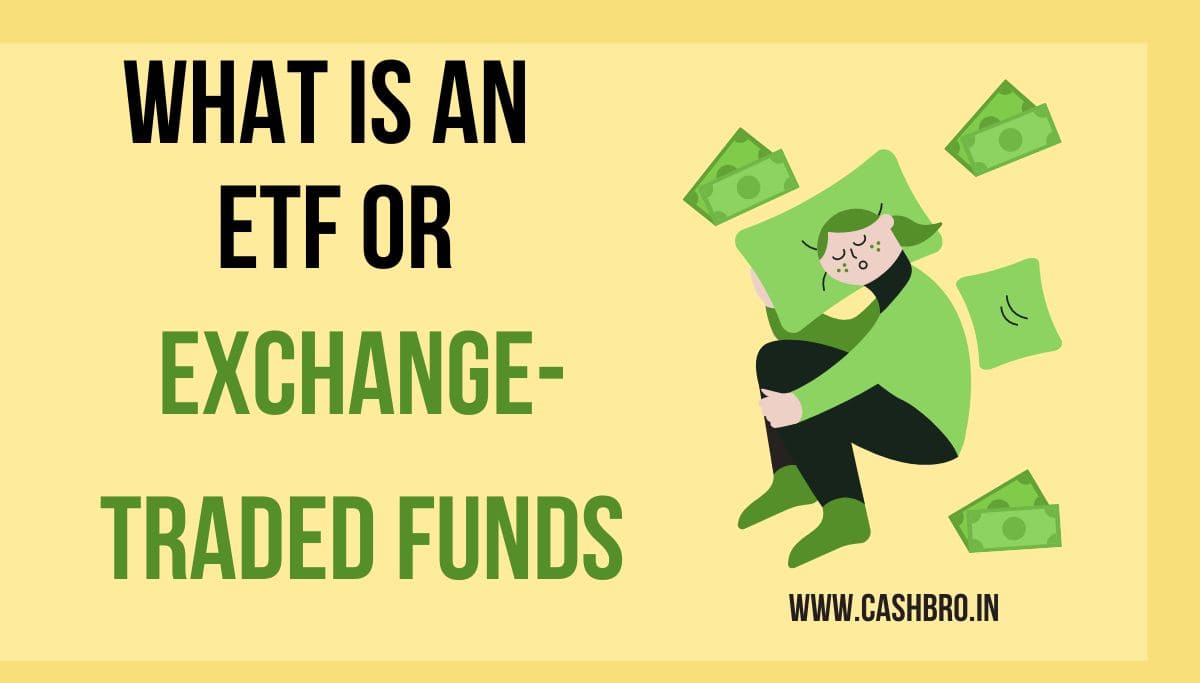Introduction
Welcome to the fascinating world of investment! If you’re here, it means you’re keen to understand, explore, and perhaps, step into the realm of Exchange Traded Funds (ETFs). Well, you’re in the right place!
To dive deep, let’s first set a quick context. Imagine a market mechanism that gives you the flexibility of investing in the whole market or specific sectors, just like a mutual fund, but with the added advantage of buying and selling it just like a regular stock, anytime during market hours. Sounds too good to be true? Not at all! Meet ETFs – a unique hybrid model that brings together the best of both the worlds of Mutual funds and Stocks.
Understanding ETFs is essential in today’s financial landscape. It’s fast becoming a popular investment vehicle for its potential of diversification, low costs, and liquidity. Whether you are an experienced trader or a beginner stepping into the world of investing, ETFs are one tool you must know!
Stick around as we embark on this exciting journey to unfold the mysteries of ETFs. By the end, you’ll have a solid grasp of why ETFs are considered a significant part of the modern financial toolbox. So, let’s get started!
Understanding ETFs

Before we get deeper into the topic, let’s start by defining what an ETF is. Exchange Traded Fund (ETF) is an investment fund that’s traded on stock exchanges, much like stocks. However, unlike a single stock that provides ownership in one company, an ETF holds a collection of assets like stocks, bonds, or commodities, mirroring a specific index or sector.
So what makes them different? Traditional investments, such as stocks or bonds, allow you to invest in one company or government entity at a time. With ETFs, you get exposure to a broad range of companies, sectors, or commodities with a single investment. Hence, it introduces an element of diversification in your portfolio – a quality highly appreciated in risk management.
Now that we have a basic definition, let’s break down the various types of ETFs to better understand how they work:
- Stock ETFs: These are the most common types of ETFs. Based on market indices, these ETFs hold a portfolio of different stocks. Owners of stock ETFs get the benefit of owning a diverse range of stocks with a single purchase.
- Bond ETFs: Ideal for investors looking for steady income with less emphasis on capital growth, Bond ETFs focus on investments in a basket of different bonds, ranging from government to corporate bonds.
- Commodity ETFs: These ETFs are designed for investors wanting exposure to commodity markets, such as gold, oil, or agricultural products, without actually owning the physical commodity.
- Sector ETFs: Sector ETFs allow investors to invest in particular sectors of the market, such as technology, healthcare, or renewable energy. They’re a great choice if you have a strong belief in the future performance of a certain sector.
Remember, knowledge is power, especially while investing. Understanding these categories and their unique attributes is a significant step towards making informed and effective investment decisions.
History and Impact of ETFs
A trip down memory lane is a great way to understand the roots of ETFs and its phenomenal growth over the years. Let’s take a look at a broad timeline:
- Birth of ETFs: The concept of ETFs emerged in the early 1990s, with the first successful ETF launched in 1993 in the U.S., known as the Standard & Poor’s Depository Receipts (SPDR), tracking the S&P 500 index.
- Global Expansion: The idea quickly caught the attention of global markets. By the late ’90s, ETFs had made their way into Europe and Asia.
- Diversification: As the 2000s rolled in, the world witnessed a boom in the variety of ETFs available. Sector-specific ETFs, Commodity ETFs, and Leveraged ETFs were introduced, providing investors with a plethora of choices.
- Rise of ETFs: The 2010s was a period of explosive growth, with ETFs becoming mainstream among individual and institutional investors alike.

Ever since their inception, ETFs have been profoundly influencing the global markets. Their impact can be traced along several dimensions:
- Market Access: ETFs have democratized the markets by providing retail investors access to an array of domestic and international indices, commodities, and sectors that were previously inaccessible or too expensive to access.
- Liquidity: The ability to trade ETFs like common stocks has introduced greater liquidity in the markets.
- Market Efficiency: ETFs have contributed to market efficiency by offering a transparent price discovery mechanism. Investors can see the underlying assets, and the value of each ETF share is updated throughout the day.
- Investor Behavior: ETFs have also influenced investor behavior. Instead of picking individual stocks, more investors are opting for ETFs to get broad market exposure, thus promoting diversified investing.
More than just being another investment option, ETFs have carved their distinctive space in the global financial market. Their stupendous growth and wide acceptance among investors underline the profound impact they have had on investment landscapes around the globe.
The Mechanics of ETFs
An integral part of understanding ETFs involves deciphering the underlying mechanics. In this section, let’s delve into the ETF creation and redemption process and unravel the relation between benchmark indices and ETFs’ management styles.
ETF Creation and Redemption Process
The creation and redemption process is vital to the functioning of ETFs:
- Creation: The process starts when a sponsor, usually a fund management company, decides to create an ETF. They design the ETF to track a specific benchmark index and then approach an authorized participant (AP), usually a large financial institution, with a list of assets. The AP acquires those assets and hands them over to the sponsor in exchange for ETF shares, which can then be sold on the open market.
- Redemption: The reverse process is called redemption. Here, the AP buys ETF shares from the open market and exchanges them back with the sponsor for the underlying assets.
This creation-redemption process keeps the ETF’s price close to its net asset value (NAV) and ensures liquidity and cost-efficiency for investors.
Read More : Scalping vs Swing Trading
Benchmark Indices and ETF Management Styles
ETFs traditionally follow a specific benchmark index, such as a stock or bond index. This approach to management is often called ‘passive management,’ as the goal is not to beat the market but to mirror its performance. Because they require less hands-on management, passive ETFs usually boast lower fees than their actively managed counterparts.
On the other hand, ‘actively managed’ ETFs do not adhere to a benchmark index. Instead, the fund manager actively selects and manages the ETF’s portfolio with the goal of outperforming the market. These ETFs may offer higher returns but also come with higher management fees due to the increased involvement of the fund manager.
In essence, the choice between a passively managed ETF and an actively managed ETF depends on the investor’s personal philosophy, risk tolerance, and financial goals. Understanding the mechanics of ETFs and their management styles is key to help you make the right choice for your investment portfolio.
Benefits of Investing in ETFs

Having embraced the history, mechanics, and types of ETFs, let’s dive into the main reasons why ETFs are becoming a preferred choice for many investors. They harbour numerous advantages that make them stand out as a lucrative investment option:
Diversification Benefits Of ETF
One primary advantage of ETFs is diversification. ETFs allow you to invest in a basket of different assets (stocks, bonds, commodities) with a single purchase, reducing the risk associated with investing in a single security. This approach spreads the risk and helps to mitigate the potential impact of one poor-performing asset on your overall portfolio.
Read More : Special Pre-Open Session in Stock Trading
Lower Fees Structuring On ETF
Another compelling reason favoring ETFs is their lower fee structure compared to traditional mutual funds. ETFs are typically passively managed and aim to track the performance of a specific index, reducing the amount of active management required and hence, lowering the associated costs.
Flexibility and Ease of Trading For ETF
ETFs provide unparalleled flexibility to investors—they are traded like stocks on an exchange and can be bought and sold throughout the day at market prices, allowing investors to respond quickly to market changes. Conversely, traditional mutual funds are bought and sold only once at the end of the trading day, at their net asset value (NAV).
Tax Efficiency On ETF
ETFs are structured in a way that allows investors to have control over the timing of their tax liabilities, making them more tax-efficient compared to mutual funds. This efficiency arises from the unique “in-kind” creation and redemption process, where ETF shares are exchanged for securities, minimizing the cash transactions that could lead to taxable gains.
In summary, the benefits of ETFs are plentiful—diversification, cost efficiency, flexibility of trading, and tax advantages—to name a few. These traits make ETFs accessible and appealing to a wide range of investors, making them a significant component of many well-rounded investment portfolios.
Strategies for ETF Trading
Successful ETF trading does not only involve choosing the right kinds of funds, but also the strategies you’ll employ. Here are some steps to help you in this process.
Choosing the Right Broker For ETF
Your choice of broker can have a significant impact on your trading success. Consider the following when selecting the right broker:
- Ease of Use: The platform should be easy to use and navigate.
- Trade Costs: Compare commission rates and fees. Low trade costs are important for frequent traders.
- Range of Offerings: Ensure the broker offers a wide range of ETFs.
- Customer Service: Good customer service and support can be crucial, especially for new traders.
Assessing an ETF’s Performance
Understanding how to properly measure an ETF’s performance is essential. Consider the following tactics:
- Compare to Benchmark: Always compare the ETF’s returns to its benchmark index.
- Consider Drawdown: Look at the ETF’s drawdown, which is the largest peak to trough decline during a specific record period.
- Look at Past Performance: Consider the fund’s past performance but remember that it is not a guarantee of future returns.
Building a Diversified ETF Portfolio
Proper diversification can help to mitigate risks and maximize returns. To build a diversified ETF portfolio, do the following:
- Asset Allocation: This involves spreading your investments across various asset classes e.g., stocks, bonds, real estate, etc.
- Dollar-Cost Averaging (DCA): DCA involves investing a fixed amount consistently, regardless of market conditions. This can potentially reduce the impact of market volatility on your portfolio.
By leveraging these strategies, you can make more informed decisions when trading ETFs, thereby potentially increasing your chances for higher returns.
Pros Vs Cons Of ETF
| Pros | Cons |
|---|---|
| Diversification | Potential for Over-diversification |
| Ease of Trading | Sector or Theme Risks |
| Cost-effective (low fees) | Tracking Error |
| Liquidity | Leveraged/Inverse ETF Risks |
| Tax Efficiency | Expense Ratio Variation |
| Transparency | Potential Trade Cost Differences |
| Access to Various Markets and Sectors | ETF Closure Consequences |
Innovations in ETFs
Exchange-traded funds (ETFs) have developed significantly over the years, offering investors a wider range of opportunities. The following section will delve into some of the new types of ETFs that have emerged in the market.
Thematic ETFs
Thematic ETFs operate based on predictable investment trends. They select stocks from diverse sectors unified by a common trend or theme, such as technological developments, climate change, or social factors. They offer a unique way for investors to diversify their portfolio while partaking in globally impactful trends.
Smart Beta ETFs
Smart Beta ETFs aim to enhance returns, reduce risks, or improve diversification by using a rules-based system for selecting investments to be included in the ETF. They strategically track an index unlike traditionally managed ETFs, which passively replicate the performance of an index.
Leveraged and Inverse ETFs
Leveraged ETFs look to generate a return that is a multiple of the performance of the underlying index, meaning they offer amplified exposure to a specific index.
On the other hand, Inverse ETFs are constructed to profit from a decline in the value of an underlying benchmark. They are often used by investors who wish to profit from a downward price movement in a specific sector or index.
Each of these new types of ETFs offers unique advantages and risks to investors. It is essential for any investor to fully comprehend these inherent features in order to properly utilize them within their investment strategy.
Frequently Asked Questions(FAQs)
How Do ETFs Work?
ETFs enable investors to buy and sell a basket of securities covering a specific market, sector, or theme, mirroring the performance of an index or related benchmark.
What Is an ETF Account?
An ETF account refers to an investment account that allows you to buy, sell, and hold ETFs through a brokerage or online trading platform.
What does ETF stock mean?
An ETF stock represents a share in an ETF, which itself holds a basket of underlying assets such as stocks, bonds, or commodities.
ईटीएफ स्टॉक का क्या मतलब है?
ईटीएफ स्टॉक एक ईटीएफ में हिस्सेदारी का प्रतिनिधित्व करता है, जो स्वयं अंतर्निहित संपत्तियों के एक टोकरी को रखता है, जैसे कि स्टॉक, बॉन्ड या कमोडिटी|
Are ETFs a good investment?
ETFs can be a good investment due to their diversification, low-cost structure, and flexibility, making them suitable for a variety of investors.
What is in an ETF?
An ETF typically consists of a diversified basket of underlying assets, such as stocks, bonds, real estate, or commodities, aiming to replicate the performance of a specific index or benchmark.
What are ETF examples?
Examples of ETFs include the SPDR S&P 500 ETF (SPY), Vanguard Total Stock Market ETF (VTI), and iShares Russell 2000 ETF (IWM).
What are 3 advantages of ETFs?
Diversification: ETFs offer exposure to a variety of underlying assets.
Cost-effective: Lower fees compared to actively managed funds.
Liquidity: Can be bought and sold throughout the trading day, similar to stocks.
Conclusion
In conclusion, ETFs are a powerful investing tool. They offer numerous benefits such as versatility, liquidity, and accessibility, allowing all kinds of investors to participate in diverse markets globally. Further, the advent of thematic, smart beta, and leveraged/inverse ETFs expands the potential for unique investing strategies and portfolio diversification.
Trading strategies discussed, such as choosing the right broker, evaluating ETF performance, and building a diversified portfolio, can provide a robust approach to ETF investing. These strategies can help mitigate risks while maximizing potential returns.
However, successful investing in ETFs requires not only effective strategies but also continuous knowledge acquisition. It’s crucial to stay informed about market trends, changes in various ETF structures, and innovative strategies. Regularly reading articles, attending webinars, and joining investor forums can be beneficial in this regard.
Remember, the world of ETFs is broad and constantly evolving – continuous learning is not just helpful, but vital. Happy investing!
